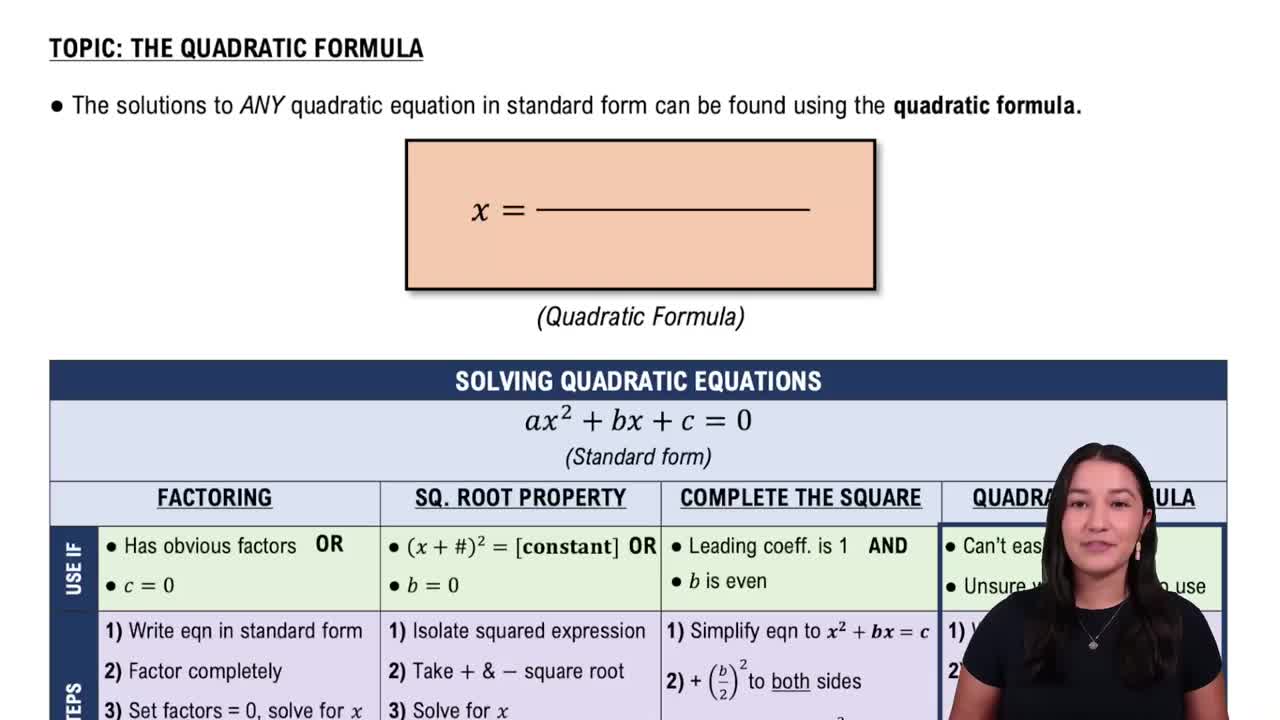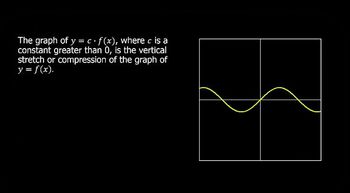Table of contents
- 0. Review of Algebra4h 16m
- 1. Equations & Inequalities3h 18m
- 2. Graphs of Equations43m
- 3. Functions2h 17m
- 4. Polynomial Functions1h 44m
- 5. Rational Functions1h 23m
- 6. Exponential & Logarithmic Functions2h 28m
- 7. Systems of Equations & Matrices4h 6m
- 8. Conic Sections2h 23m
- 9. Sequences, Series, & Induction1h 19m
- 10. Combinatorics & Probability1h 45m
3. Functions
Transformations
Problem 75a
Textbook Question
Consider the following nonlinear system. Work Exercises 75 –80 in order. y = | x - 1 | y = x^2 - 4 How is the graph of y = | x - 1 | obtained by transforming the graph of y = | x |?
 Verified step by step guidance
Verified step by step guidance1
<insert step 1> Start with the basic graph of y = |x|, which is a V-shaped graph with its vertex at the origin (0,0).
<insert step 2> Recognize that y = |x - 1| is a horizontal transformation of y = |x|.
<insert step 3> To transform y = |x| into y = |x - 1|, shift the entire graph of y = |x| to the right by 1 unit.
<insert step 4> The vertex of the graph y = |x - 1| will now be at the point (1,0) instead of (0,0).
<insert step 5> The V-shape of the graph remains the same, but it is now centered at (1,0) due to the horizontal shift.
Recommended similar problem, with video answer:
 Verified Solution
Verified SolutionThis video solution was recommended by our tutors as helpful for the problem above
Video duration:
3mPlay a video:
Was this helpful?
Key Concepts
Here are the essential concepts you must grasp in order to answer the question correctly.
Absolute Value Function
The absolute value function, denoted as y = |x|, outputs the non-negative value of x. Its graph is a V-shape that opens upwards, with the vertex at the origin (0,0). Understanding this function is crucial for analyzing transformations, as it serves as the base graph from which other variations are derived.
Recommended video:

Function Composition
Transformations of Functions
Transformations of functions involve shifting, reflecting, stretching, or compressing the graph of a function. For the absolute value function, a horizontal shift can be applied by adjusting the input (x), while vertical shifts can be made by adding or subtracting a constant. Recognizing these transformations helps in understanding how the graph of y = |x - 1| is derived from y = |x|.
Recommended video:

Domain & Range of Transformed Functions
Quadratic Function
A quadratic function, represented as y = ax^2 + bx + c, produces a parabolic graph. In this context, the function y = x^2 - 4 is a downward shift of the standard parabola y = x^2 by 4 units. Understanding the properties of quadratic functions is essential for analyzing intersections and relationships with other functions, such as the absolute value function.
Recommended video:

Solving Quadratic Equations Using The Quadratic Formula

 5:25m
5:25mWatch next
Master Intro to Transformations with a bite sized video explanation from Nick Kaneko
Start learningRelated Videos
Related Practice

























